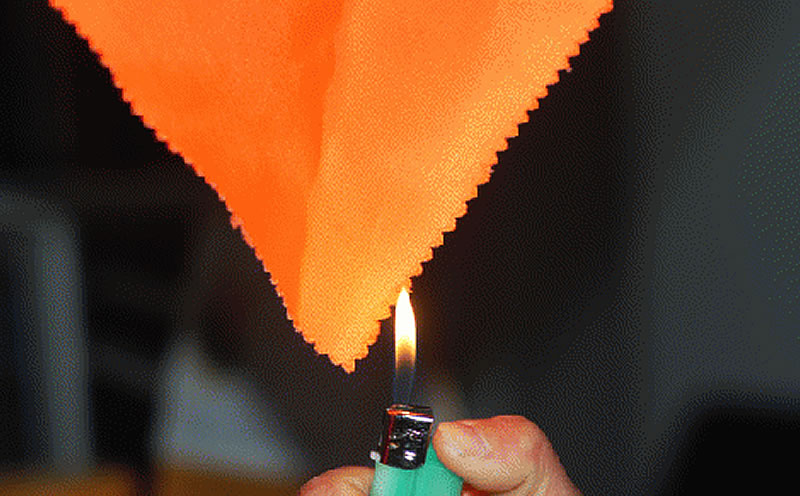Table of Contents

Flame retardant fabric: Everything You Need to Know
Flame retardant fabric plays a crucial role in many industries, including firefighting, military, and even everyday household items. Its ability to resist fire and delay the spread of flames is essential for ensuring safety and preventing accidents. In this comprehensive article, we will delve into the world of flame retardant fabric, exploring its properties, applications, and the different types available in the market.
1. Understanding Flame Retardant Fabric
Flame retardant fabric refers to textiles that have been treated or manufactured with chemicals to reduce their flammability. These fabrics are designed to resist ignition and inhibit the spread of flames, providing valuable time for people to escape in case of a fire emergency. The use of flame retardant fabric has become increasingly important in various industries where fire hazards are prevalent.
2. How Flame Retardant Fabric Works
Flame retardant fabric works by either physically blocking the fire or chemically interrupting the combustion process. Physical flame retardant fabrics, such as those made from inherently non-combustible fibers like fiberglass or aramid, act as a barrier between the fire and the material. On the other hand, chemical flame retardants work by releasing gases or forming a protective layer when exposed to heat, thereby preventing or slowing down the ignition and spread of flames.
3. Applications of Flame Retardant Fabric
Flame retardant fabric finds extensive use in a wide range of applications. In the firefighting industry, flame retardant clothing is essential to protect firefighters from heat and flames. The military also relies on flame retardant textiles for uniforms and equipment to enhance soldier safety in combat situations. Additionally, flame retardant fabrics are used in the production of home furnishings, such as curtains, upholstery, and bedding, to minimize fire risks in residential settings.
4. Types of Flame Retardant Fabrics
There are several types of flame retardant fabrics available, each with its own set of properties and applications. Some common types include:
a) Aramid Fabrics
Aramid fabrics, like Nomex and Kevlar, are known for their exceptional heat and flame resistance. These fabrics are widely used in protective clothing for firefighters, racecar drivers, and military personnel.
b) Polyester/Cotton Blends
Polyester/cotton blends are popular for their comfort and durability. When treated with flame retardant chemicals, they become suitable for applications such as workwear and uniforms.
c) Modacrylic Fabrics
Modacrylic fabrics are inherently flame retardant and are commonly used in upholstery, carpets, and protective clothing. They offer good resistance to heat and flames, making them ideal for various industries.
d) Wool
Wool naturally has flame-retardant properties due to its high moisture content and structure. It is often used in carpets, blankets, and furniture upholstery to provide fire resistance.
5. Testing and Certification
Flame retardant fabrics undergo rigorous testing to ensure their effectiveness and compliance with safety standards. Various international organizations, such as UL (Underwriters Laboratories) and EN (European Norms), have established testing procedures and certification requirements to guarantee the quality and performance of flame retardant textiles. These certifications provide assurance to customers that the fabric meets specific safety standards.
6. Care and Maintenance
To maintain the flame retardant properties of fabric, proper care and maintenance are crucial. It is important to follow the manufacturer's instructions for washing and drying the fabric. Using harsh chemicals or bleach can reduce the effectiveness of flame retardant treatments. Regular inspections and testing may also be necessary to ensure the fabric's flame retardancy is still intact.
7. Innovations in Flame Retardant Fabric
The field of flame retardant fabrics is continually evolving, with ongoing research and development efforts to improve performance and sustainability. Innovations include the development of eco-friendly flame retardants, such as phosphorus-based compounds, which reduce environmental impact without compromising safety. Additionally, advancements in nanotechnology have led to the creation of flame retardant coatings that can be applied to fabrics for enhanced fire resistance.
8. Safety Considerations
While flame retardant fabric provides an extra layer of protection, it is important to remember that it does not make materials completely fireproof. It is essential to follow proper safety protocols, such as maintaining a safe distance from open flames and regularly inspecting and replacing worn-out flame retardant garments. Additionally, it is crucial to educate individuals on fire safety practices to prevent accidents.
9. Environmental Impact
Flame retardant fabrics have faced criticism regarding their potential environmental impact. Some chemical flame retardants used in the past were found to be harmful to human health and the environment. However, advancements in technology and regulations have led to the development of safer alternatives and stricter control over the use of hazardous substances. It is important for manufacturers and consumers to prioritize sustainable and eco-friendly flame retardant solutions.
10. The Future of Flame Retardant Fabric
The future of flame retardant fabric is likely to focus on further enhancing fire resistance while minimizing environmental impact. Research into new materials, technologies, and manufacturing processes will continue to drive innovation in this field. By prioritizing safety, sustainability, and performance, the industry can meet the growing demand for flame retardant fabrics in various sectors.
